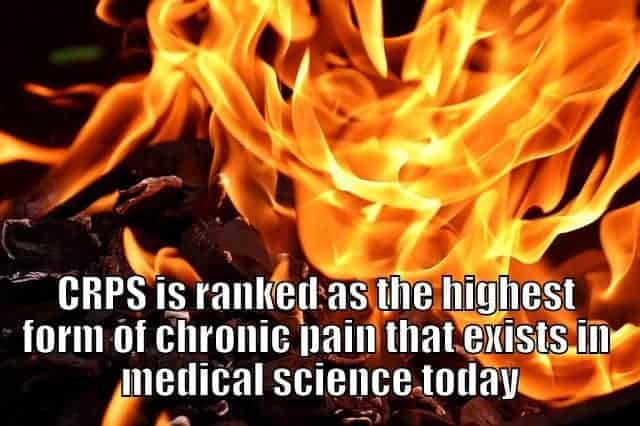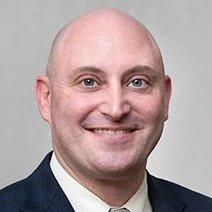The Dedication of Our Austin CRPS Lawyers – Traub Law Office
Our office has observed a rise in clients diagnosed with Chronic Regional Pain Syndrome (CRPS) following various traumas. Although relatively obscure, CRPS is gaining recognition. However, understanding and treatment options remain limited. If you suspect CRPS after an auto accident, seek medical attention promptly. Early diagnosis and intervention can improve outcomes and manage symptoms effectively. Consulting with Austin CRPS lawyers may also be advisable to explore legal options for compensation to cover medical expenses and other losses.
What is CRPS?
CRPS, also known as Reflex Sympathetic Dystrophy Syndrome (RSD), is a life-altering condition. It is characterized by chronic, severe pain, often accompanied by swelling and skin changes. The condition is usually triggered by trauma, which may seem minor compared to the subsequent problems. There is no known cure, although experimental treatments are ongoing.
(For an initial broad overview of experimental treatments see the Treatment discussion in the Wikipedia entry for Complex regional pain syndrome)
Historical Background
CRPS was first described in 1864 by Drs. Mitchell, Moorehouse, and Keen. They studied Civil War soldiers with persistent burning pain and progressive trophic changes. Initially, it was termed “erythromelalgia.” The name changed to “causalgia” in 1867. Over the years, the syndrome has had various names. These include Sudeck’s Atrophy, Traumatic Vasospasm, and Reflex Sympathetic Dystrophy Syndrome (RSD).
What Causes CRPS?
The exact cause of CRPS is unknown but is believed to involve the sympathetic nervous system. Trauma, even minor, is often a precipitating factor. Studies suggest that trauma results in C-fiber hyperactivity, leading to spontaneous pain, hyperesthesia, and allodynia. The sympathetic nervous system remains hyperactive, sustaining abnormal sensitizations and persistent pain.
Trauma, even minor trauma, is the major precipitating factor in CRPS. Surgery, fractures, and animal bites can all cause CRPS.
In one study, CRPS began the following:
- Surgery (33.5%)
- Slip and Fall (19.8%)
- Fracture (18.8%)
- Sprain (14.6%)
- Crush Injury (14.2%)
- Contusion (12.3%)
- Auto Accident (3.9%)
- Other Trauma (3.2%)
- Lacerations (1.0%)
In that study, the time span between the onset of symptoms and the time of diagnosis was about 10 ½ months.
What Areas are affected by CRPS?
CRPS can occur in any area of the body, but the most common is in one or more of the extremities.
The syndrome affects all levels of tissue:
- Skin
- Subcutaneous
- Fascia
- Muscle
- Synovium
- Bone
Affected Areas and Symptoms
CRPS can affect any part of the body, but it most commonly impacts the extremities. It affects all tissue levels, including skin, subcutaneous tissue, fascia, muscle, synovium, and bone. Symptoms include spontaneous pain, swelling, changes in skin color and temperature, and increased sweating and hair growth. Pain can be triggered by light touch or even a breeze. This can lead to decreased range of motion, atrophy, and severe osteoporosis.
Why CRPS and Medical Malpractice Cases Are Hard to Prove
Proving liability in CRPS and medical malpractice cases is difficult because CRPS often develops after seemingly minor injuries or procedures, making it hard to link directly to a specific action. The medical uncertainty surrounding CRPS adds to the challenge, allowing insurers to question causation. These cases usually need strong medical evidence and expert testimony, which is why working with an experienced attorney is so important.
Stages and Symptoms of CRPS
CRPS often progresses through three stages, each with distinct symptoms that worsen over time if left untreated:
- Stage One (Acute): Begins within 1–3 months of injury. Symptoms include burning pain, sensitivity to touch, swelling, warmth, and red or flushed skin.
- Stage Two (Dystrophic): Pain and swelling become constant, the skin may turn bluish and feel cold, muscles may stiffen, and hair growth can slow. Limited mobility sets in.
- Stage Three (Atrophic): Pain may spread, muscles visibly waste away, skin becomes thin and shiny, joints stiffen severely, and spasms may occur.
Early diagnosis and treatment are critical to managing CRPS effectively.
Types of CRPS
CRPS is categorized into Type I and Type II. Type I develops after an initiating event without observable nerve injury, while Type II involves a nerve lesion. The distinction is crucial for diagnosis and treatment.
How is CRPS diagnosed?
CRPS diagnosis is based on clinical evaluation, bone scans, thermal imaging, histologic changes, and sympathetic blocks. No single test confirms CRPS, but a combination of tests can support the diagnosis. Conditions like rheumatoid arthritis, herpes, and gout can be confused with CRPS, while others like myocardial infarction and multiple sclerosis can occur simultaneously.
How painful is CRPS?
CRPS is considered the most painful condition known, rated 42 on the McGill Pain Index. This is higher than childbirth, amputation, and chronic back pain. The pain is often constant and can spread to other body areas.

Here is a chart from one study regarding the pain at one set of CRPS:
| Type | Constant | Intermittent | |
| Sharp | 77.2% | 41.2% | 56.1% |
| Shooting | 61.6% | 29.4% | 68.2% |
| Dull | 40.9% | 72.8% | 25.1% |
| Aching | 76.5% | 79.2% | 18.1% |
| Throbbing | 66.5% | 59.4% | 37.6% |
| Burning | 80.4% | 57.9% | 35.1% |
| Electric Shock | 37.6% | 25.6% | 72.0% |
| Constant | 58.3% | 85.2% | 3.9% |
| Intermittent | 24.3% | 20.8% | 67.0% |
| Radiating | 48.7% | 47.0% | 48.9% |
| Stabbing | 50.4% | 33.3% | 63.5% |
| Cramping | 49.0% | 31.3% | 66.3% |
| Tingling | 70.3% | 47.0% | 50.2% |
Here are the responses for how frequently the pain occurred:
Constant 80-100% of the time 70.8%
Nearly constant 50-80% of the time 17.5%
Intermittent 25-50% of the time 6.7%
Occasional less than 25% of the time 5.0%
Duration and Treatment
CRPS is usually a permanent condition, with periods of remission. Early diagnosis is crucial for effective treatment. Options range from analgesics to nerve stimulators and even amputation in severe cases. Treatments include cool water immersion, elevation, splinting, range of motion exercises, corticosteroids, nerve stimulators, anti-inflammatory agents, and nerve blocks.
Internal pain pumps are implantable devices used in severe CRPS cases when other treatments haven’t worked. Surgically placed under the skin, they deliver medication directly to the spinal cord area through a catheter, allowing for better pain control with smaller doses and fewer side effects. These pumps are typically part of a broader pain management plan and are reserved for cases that don’t respond to more standard therapies.
Surgical Sympathectomy and the Emotional Toll of CRPS
Surgical sympathectomy is a rare, last-resort procedure for CRPS patients who haven’t found relief through medications, therapy, or nerve blocks. It involves cutting or destroying certain nerves to disrupt pain signals. Due to its risks—like worsened pain or permanent nerve damage—it’s considered only in the most severe cases.
Beyond the physical pain, CRPS often brings serious emotional and psychological strain. Misdiagnoses, ineffective treatments, and ongoing suffering can take a toll on mental health, relationships, sleep, and daily life.
Psychological Impact
CRPS causes severe psychological distress, affecting family, work, sleep, and quality of life. Misdiagnosis can exacerbate the problem, leading to frustration and hopelessness. Medical treatment is expensive and often involves unnecessary procedures.
What are the Effects of Suffering from CRPS?
It’s not surprising that people suffering from extreme pain extending for a lifetime will also suffer severe psychological overlays. Failure by the physicians to make a proper diagnosis often compounds the problem by labeling it as a psychological problem. CRPS will interrupt all phases of a person’s life: family, work (over 75% change jobs due to CRPS), sleep, rest, quality of life, and suicide is a possibility to be aware of. Medical treatment is expensive (which can be aggravated by unnecessary treatments based upon erroneous diagnosis).
From a study of CRPS, the following table shows how much the pain has interfered with life:
| All of the Time | Most of the Time | Some of the Time | Not at All | |
| Appetite | 8.5% | 18.7% | 50.6% | 22.2% |
| Sleep | 36.1% | 35.1% | 25.4% | 3.4% |
| Marriage & Family Life | 30.6% | 28.9% | 32.8% | 7.7% |
| Social Activities/ Friendships | 35.2% | 30.5% | 28.9% | 5.4% |
| Sexual Activity | 33.0% | 23.2% | 31.0% | 12.8% |
| Employment | 62.9% | 18.2% | 14.9% | 4.0% |
| Housework/Chores | 47.8% | 32.2% | 17.3% | 2.6% |
| Hobbies/Recreation | 47.0% | 33.0% | 17.0% | 3.0% |
| School Attendance/Studying | 40.1% | 21.5% | 17.0% | 21.4% |
Who Can Be Held Liable in CRPS Cases?
Determining liability in CRPS cases is often complex and depends on the specific circumstances surrounding the injury. When CRPS develops after a personal injury, the party responsible for the negligence that led to the original harm may be held accountable. Identifying the responsible party is crucial in pursuing compensation for the damages incurred.
Liability can arise from various situations, including:
- Motor Vehicle Accidents: If CRPS develops after a car accident caused by another driver’s negligence, the at-fault driver and their insurance company may be liable for damages. This includes compensation for medical expenses, lost wages, and pain and suffering.
- Premises Liability Events: Property owners may be held responsible if a slip and fall accident occurs due to unsafe conditions on their property, leading to CRPS. This can include accidents in commercial or residential settings where the property owner failed to maintain a safe environment.
Seeking Legal Help
If diagnosed with CRPS after an injury, or if you suspect you have it due to an accident, professional legal advice is essential. Research law firms specializing in CRPS cases, prepare your information, and contact the firm for a free consultation. During the consultation, discuss your condition, how it occurred, and potential legal strategies.
People diagnosed with Complex Regional Pain Syndrome (CRPS) after incidents like car crashes, falls, or defective product injuries have secured substantial settlements. Depending on the case’s severity, especially when there’s chronic pain, lasting disability, or high medical expenses, compensation can range from $200,000 to over $600,000. These amounts reflect how deeply CRPS can affect a person’s quality of life and highlight the importance of exploring your legal options if you’re suffering from this condition.
Choosing the Right CRPS Attorney for Your Case
Selecting the right lawyer is crucial when seeking compensation after a CRPS diagnosis. The complexity of this condition demands an attorney who understands its unique medical challenges and the significant impact it has on daily life. With the right legal representation, you can ensure your case is handled with care and expertise.
When searching for a suitable CRPS attorney, prioritize experience. Look for lawyers with a proven track record in handling CRPS or similar nerve pain cases. Check online directories such as Avvo and Martindale-Hubbell for client testimonials, case histories, and peer reviews. A qualified attorney should not only be well-versed in the law but also have established relationships with medical professionals to accurately assess the extent of your pain, suffering, and financial losses.
To find the right fit, consider the following key factors:
- Medical Expertise: Opt for an attorney who is familiar with the intricacies of CRPS, including its symptoms and its effects on work, family life, and future opportunities. They should be able to navigate the complexities of the condition and its long-term implications.
- Tailored Approach: Choose a lawyer who listens to your concerns and develops a customized strategy for your case. Avoid attorneys who offer one-size-fits-all solutions, as each CRPS case is unique.
- Empathy and Determination: The legal process can be daunting, so it’s essential to have a compassionate and determined advocate by your side. A dedicated attorney will fight to maximize your compensation and guide you through each step of the process.
How to Get a Free Consultation for Your CRPS Case
If you have been diagnosed with Complex Regional Pain Syndrome (CRPS) after an injury, or suspect you have it due to an accident, you may need professional advice. Follow these steps to get a free consultation:
1. Research Law Firms: Look for personal injury attorneys who specialize in CRPS cases. Websites like Avvo or Martindale-Hubbell offer detailed reviews and ratings.
2. Prepare Your Information: Gather all relevant medical records, accident reports, and any evidence that supports your case. This will help the attorney evaluate your situation more effectively.
3. Contact the Firm: Visit the websites of the law firms you are interested in. Many offer free consultation options prominently displayed on their homepage or contact page.
4. Fill Out the Form: Most firms have an online form where you can enter your details and briefly describe your case. This usually requires your name, contact information, and a short description of your CRPS condition and the incident leading to it.
5. Schedule the Consultation: After submitting your form, you should receive a confirmation email or a phone call to schedule your consultation. Choose a time when you can discuss your case without interruptions.
6. Consultation Day: During the consultation, discuss your condition, how it occurred, and potential legal strategies. Be honest and detailed to get the best advice.
By following these steps, you can take the first crucial step toward getting the legal help you need for your CRPS case. Don’t let this condition control your life; seek professional advice to explore your options.
Summary
CRPS causes severe pain and muscle issues. It often starts from minor injuries. The symptoms can be confusing. This leads to wrong conclusions that the pain is imagined. As the condition worsens, it becomes harder to treat. Patients and their families often feel frustrated, angry, and hopeless.
Contact Austin CRPS Lawyers NOW!
Living with CRPS is like living in a constant state of fire—unseen, misunderstood, and unrelenting. At The Traub Law Office, we understand that your pain is real, your condition is life-altering, and your fight for fair compensation should not be another uphill battle. You’ve already been through enough. That’s why our Austin CRPS lawyers are here—to take the legal pressure off your shoulders and advocate fiercely for the justice and resources you need. We’ll work with your doctors, gather the right evidence, and hold the responsible parties accountable. If you’re ready to stop suffering in silence and start reclaiming control over your future, contact us today for a free consultation.
If you have been diagnosed with CRPS after an injury, contact us for a free consultation. We collaborate with medical professionals to determine the extent of harm and document claims for lost wages, medical expenses, and pain and suffering. Call us at (512) 246-9191 or fill out the contact form. We aim to ensure you receive the justice and compensation you deserve.

